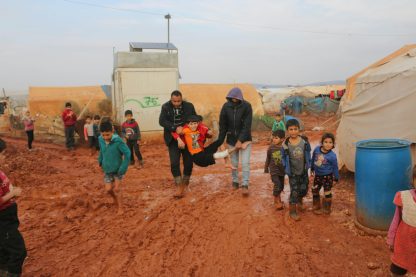In our ever-evolving society, parents often find themselves in need of reliable childcare services. Babysitting programs provide a valuable solution to these parents, offering trained caregivers to look after their children in a safe and secure environment. However, managing a babysitting program entails great responsibility, as the well-being and security of the children is of the utmost importance. To ensure a successful and trustworthy program, certain guidelines must be followed to guarantee the safety and security of both the children and the caregivers.
Table of Contents
Screening and Selecting Caregivers
The first step in establishing a safe and secure babysitting program is to meticulously screen and select caregivers. This process is fundamental as it sets the foundation for the program’s success. It involves thorough background checks, reference checks, and interviews to ensure that only trustworthy individuals are entrusted with the responsibility of caring for children.
Background checks should include criminal record checks, child abuse registries, and driving history of potential caregivers. These checks help identify any red flags or potential risks. Reference checks are equally important in validating the caregiver’s character, work ethic, and ability to provide a safe environment for children. It is crucial to contact previous employers or individuals who can vouch for the caregiver’s integrity and reliability.
During the interview process, the program manager should assess the caregiver’s experience, skills, and qualifications. Questions regarding their approach to discipline, emergency response, and interaction with children should be asked to evaluate their compatibility with the program’s objectives and to ensure they can thoughtfully and safely address various childcare scenarios.
On-Demand Childcare in Your Neighborhood
Book a Sitter
Implementing Safety Protocols
Once caregivers have been carefully selected, it is essential to establish and implement comprehensive safety protocols. These protocols should cover a range of areas, including child supervision, transportation, mealtime procedures, and general safety guidelines.
Child supervision procedures should be defined clearly, ensuring that caregivers are fully attentive and present at all times. Guidelines must be established to prevent situations in which children are left alone, even momentarily. Additionally, caregivers should be trained to recognize the signs of distress, illness, or any other potential danger and know how to respond appropriately.
Transportation guidelines are crucial if the program involves outings or if caregivers need to pick up or drop off children. It is crucial to ensure that caregivers adhere to local laws and regulations related to child restraint systems, seat belts, and car seats. Regular vehicle inspections should also be conducted to guarantee the safety of the transportation equipment.
Mealtime procedures should be established to prevent choking hazards, dietary restrictions, and food allergies. Caregivers should receive training on food preparation, safe serving practices, and how to respond to any allergic reactions or emergencies related to food.
General safety guidelines should include rules for safe play, use of equipment and toys, personal hygiene practices, and prevention of accidents and injuries. Fire safety protocols, including smoke detectors, fire extinguishers, escape routes, and emergency plans, should also be incorporated into the program to mitigate risks and ensure the safety of all involved.
Emergency Preparedness and First Aid Training
In any childcare setting, being prepared for emergencies is vital. Implementing comprehensive emergency preparedness plans and providing caregivers with first aid training can make a significant difference in ensuring the safety and well-being of children.
Emergency preparedness plans should cover various scenarios such as natural disasters, medical emergencies, and accidents. The program manager should collaborate with local emergency services and create evacuation plans specific to the program’s location. These plans should include emergency contact information, escape routes, assembly areas, and instructions for managing different emergency situations.
First aid training is essential for all caregivers involved in the program. Basic first aid skills such as CPR, choking relief, wound care, and recognizing signs of distress or illness must be taught and reviewed regularly. Additionally, caregivers should be trained in administering medication, managing allergic reactions, and documenting incidents accurately.
It is important to note that first aid certifications must be kept up to date, and regular skill refreshers and practice sessions should be conducted to ensure caregivers remain competent and confident in their abilities to keep children safe in emergencies.
Childproofing the Environment
Childproofing the environment is a critical aspect of managing a babysitting program. By identifying and mitigating potential hazards, program managers can create a safe space for children to thrive.
The physical environment should be thoroughly assessed, and steps should be taken to ensure that it is free from hazards. This includes securing cabinets and drawers that contain dangerous substances, appropriately storing cleaning supplies, making sure electrical outlets are covered, ensuring sturdy furniture is properly anchored, and removing any small objects or choking hazards from children’s reach.
Additionally, sharp corners should be cushioned, staircases should be gated, and windows should have secure locks or childproof devices to prevent falls and accidents.
Regular inspections should be conducted to identify any new hazards that may arise, and caregivers should be trained to remain vigilant in maintaining a safe environment.
Maintaining Effective Communication Channels
Effective communication is at the core of any successful babysitting program. Parents need to feel connected and informed about their child’s well-being, and caregivers require a platform to report any concerns or incidents that occur while caring for the children.
Establishing communication channels between caregivers and parents is essential. This can be achieved through a variety of methods, including phone calls, online platforms, or a designated communication logbook. Regular updates about a child’s day, activities, meals, and any notable incidents should be shared with parents to ensure transparency and provide peace of mind.
Moreover, caregivers should be encouraged to report any concerns or incidents promptly. A system should be in place to allow caregivers to document their observations, accidents, injuries, or any unusual behavior. This information must be documented accurately and shared with program managers and parents, ensuring that everyone is aware and proactive in addressing any potential issues.
In conclusion, managing a babysitting program requires careful attention to safety and security guidelines. By following these guidelines and implementing procedures for screening and selecting caregivers, safety protocols, emergency preparedness, childproofing the environment, and maintaining effective communication channels, program managers can create a reliable and trustworthy environment for parents and caregivers alike. The well-being, safety, and security of the children should always remain the ultimate goal, and these guidelines pave the way for a successful babysitting program.










